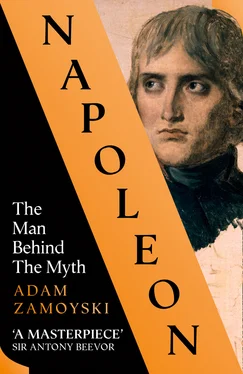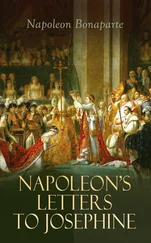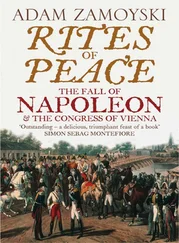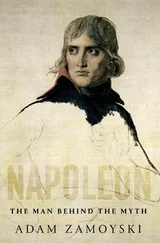Bonaparte had no right to negotiate a peace, let alone one which redrew the map as drastically as this one. The terms were that Austria ceded Belgium to France, gave up its claim to Lombardy and recognised the Cispadane Republic. In return, Austria was to receive part of the territory of the Republic of Venice.
Venice had remained neutral throughout the conflict, but French and Austrian armies had operated on its territory, using cities such as Verona and Bassano as military bases. Their depredations had provoked reprisals against French soldiers, and on 7 April Bonaparte had sent Junot to Venice with an insulting ultimatum to its government to stop them. When the Venetian authorities sent envoys to Bonaparte he lambasted them and declared that he would act like Attila if they did not submit. On 17 April there was a riot in Verona, almost certainly provoked on his orders, in the course of which some French soldiers were killed. He responded by making fresh demands of the Venetian government, insisting it reform its constitution along French lines. Provocations on either side ratcheted up the conflict, and a French vessel was fired on from one of the Venetian forts. On 1 May Bonaparte declared war on Venice and sent in troops. A puppet government was set up and instructed to settle with Austria the cession of territory, for which Venice was to be compensated with the former papal province of the Legations. Meanwhile, the plunder of the city’s treasures began and the horses of St Mark’s were removed to Paris.31
Such treatment of a neutral sovereign state was nothing new for Austria, which had joined in the partitions of Poland and had long been eyeing Venetian territory, with its access to the sea. But for the French Republic, the liberator of oppressed peoples, to act in such a way was shocking, and when they heard of it the members of the Directory were incensed. Clarke, who reached Leoben two days after the signature, was aghast. But Bonaparte had already sent Masséna to Paris with the document and an accompanying letter in which he listed the advantages for France of the agreement, which he termed ‘a monument to the glory of the French Republic’. He went on to state that if the Directory did not accept the terms of the peace, he would be content to resign his post and pursue a civilian career with the same determination and single-mindedness as he had his military one – a clear threat that he would go into politics. There was nothing the Directory could do: news of the signature of peace had been greeted ecstatically throughout France, with celebrations in some towns lasting three days.32
By the beginning of May 1797 Bonaparte was back in Milan. In the space of twelve months he had won a succession of battles, taken 160,000 prisoners and 1,100 pieces of artillery, and well over 150 standards, as well as some fifty warships, and forced the emperor to make peace after five years of war. A rest was in order, and finding the summer heat oppressive, he had installed himself at Mombello, a stately villa a short distance from the city. Set on a rise which gave it fine views, of snow-capped Alpine peaks to the north and the Lombard plain to the south, it was a perfect place for him to recover from his travails. But it soon turned into what visitors described as ‘a glittering court’ to which many gravitated.1
Pontécoulant, who had last seen Bonaparte at the War Ministry in 1795 pleading to be given back his rank, could not believe the change that had come over him. His previously hunched figure had assumed a commanding poise, and his features now put Pontécoulant in mind of classical cameos. ‘It was difficult not to feel an involuntary emotion on approaching him,’ he wrote. ‘His height, below the average, rarely equalled that of his interlocutors, yet his movements, his bearing, the decisive tone of his voice, all seemed to proclaim that he was born to command others and to impose on them the ascendancy of his will.’ Pontécoulant noted that he was polite and cordial to newcomers, speaking to each of the things which interested them. ‘There was no pride in his behaviour, only the aplomb of a man who knows his worth and has found his place,’ according to the playwright Antoine-Vincent Arnault, another who had arrived from Paris.2
As he exerted authority over the whole of northern Italy, either directly or by proxy, Bonaparte was constantly receiving representatives of the civil authorities and the administration seeking guidance or approval. And as the political system on the peninsula remained fluid, a stream of diplomats trickled through Mombello, from the emperor of Austria, the kings of Sardinia and Naples, the Pope, the republics of Genoa and Lucca, the dukes of Parma and Tuscany, from civic corporations and other bodies, even from Swiss cantons and minor German states. Couriers came and went. So did individuals seeking redress, protection or favour. In order to accommodate the numbers, a large tent was erected beside the villa to extend the drawing room.
An etiquette gradually established itself, distancing Bonaparte from his comrades-in-arms, who were made to feel they could no longer use the familiar ‘ tu ’ when addressing him. In French military custom, a commander kept table for all his officers when on active service, and until now Bonaparte had sat down with his comrades to eat whatever and wherever they could. At Mombello, he dined in public with Josephine as French monarchs had done, to the accompaniment of music and watched by his court, only occasionally inviting one or other of his staff to join them. In the evenings, the company was entertained with music, and La Grassini would drive out from Milan to sing for the conqueror. ‘He did not appear in the least embarrassed or put out by these excessive marks of honour, and received them as though he had been used to them all his life,’ commented the French diplomat André-François Miot de Melito.3
The painter Antoine Gros, who had been travelling in Italy, came to Mombello and started work on a portrait. Bonaparte would not sit still, so Josephine made him sit on her knee, and by playfully holding his head and caressing him she managed to immobilise him long enough for Gros to sketch the face. He would later work these sketches into the memorable painting of Bonaparte on the bridge of Arcole.4
Josephine reigned over this court with a relaxed grace that impressed visitors: she seemed born to the station of regal consort. The ladies of Milan who called were charmed by her easy and friendly manner. ‘Never has a woman combined more kindness with more natural grace and done more good with more pleasure than her,’ in the words of Miot de Melito. She was nevertheless bored, and pined for Paris. Her relationship with Bonaparte seems to have been passing through a good phase, as she informed Barras. ‘My husband has promised not to leave me any more,’ she wrote, ‘… you helped to marry us, and you made his happiness and mine. I could not love him more than I do.’ To Bonaparte’s delight, the cook’s dog killed Josephine’s pug Fortuné, who could no longer prevent him taking what one observer called ‘conjugal liberties’ with her in public, but the spontaneous and unaffected nature of his caresses disarmed even the most prudish.5
Josephine was less happy at having to put up with her husband’s family. Letizia arrived on 1 June, bringing Maria Nunziata, now styling herself Caroline, little Geronimo, and Maria-Anna, who had taken to calling herself Élisa and brought her fiancé, the Corsican Félix Bacciochi. She needed a dowry, which only her brother could provide, and though he disliked Bacciochi, Bonaparte had to give in to the entreaties of his mother, who approved of the marriage, as the man came from a prominent family of Ajaccio. Joseph had also turned up, followed by Joseph Fesch, who brought Paulette and Josephine’s son Eugène from Paris.
Читать дальше












